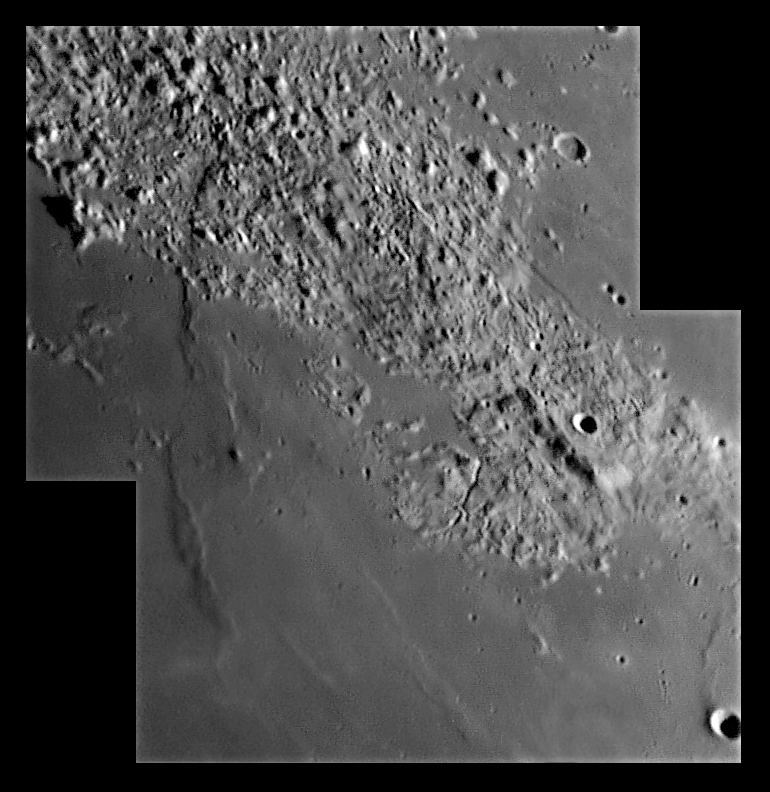
image by Richard Bosman, Enschede, Netherlands
Here is a relatively non-descript piece of unnamed lunar real estate. Can you recognize it? What is its history? Its a low rubbly region surrounded by mare lavas There is a short rille (sinuous?) that cuts through the rubble on the bottom right - I can’t tell if it previously went into the area covered by mare, if so, the lava would definitely be younger. On the opposite side is one or more linear rilles that are faintly visible under the rubble - this suggests that the rilles and the mare were there first. Finally, notice the mare ridges on the left. One passes under the rubble, or more likely, the rubble covers it. But the lavas seem to embay the rubble in various places, suggesting that the lava is more recent. From this location there is conflicting evidence of which came first. But we can back off and notice that this material is at the northern edge of Mare Serenitatis, and seems to be ejecta from the formation of the nearby Imbrium impact basin. Imbrium ejecta is demonstrateably older than the Imbrium and Serenitatis lavas in many places, so that is probably the case here too. The ridge that is covered by debris is probably a deformation of the debris by the same forces that made the ridge. And the extensional (pull-apart) forces that created the linear rilles similarly must have caused their continuation into the rubble. Looking at just this piece of terrain makes it difficult to reach a correct conclusion, but adding the regional content clarifies the relations.
Technical Details:
280 mm SCT + 3X barlow + ATK-2HS camera + Astron R filter.
The title is inspired by the new Lost season opener TV program that is on in the background as I write.
Related Links:
Rükl plates 13 & 14
Richard’s website
Yesterday's LPOD: A Chinese Globe
Tomorrow's LPOD: A Rille That Doesn't Know What to do with Itself
COMMENTS?
Register, Log in, and join in the comments.



